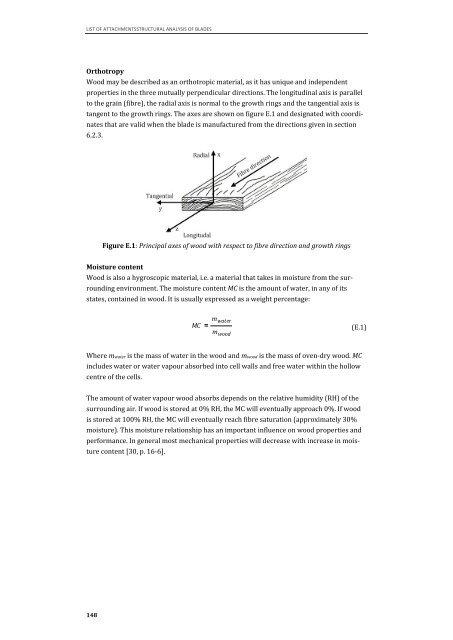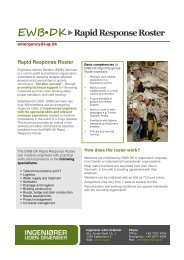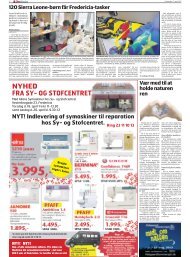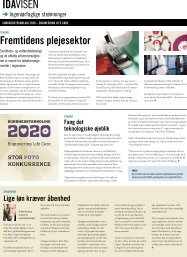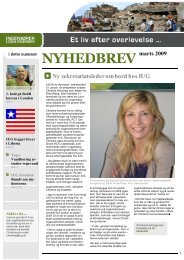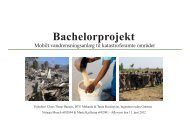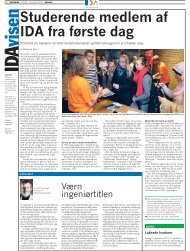You also want an ePaper? Increase the reach of your titles
YUMPU automatically turns print PDFs into web optimized ePapers that Google loves.
LIST OF ATTACHMENTSSTRUCTURAL ANALYSIS OF BLADES<br />
Orthotropy<br />
Wood may be described as an orthotropic material, as it has unique and independent<br />
properties in the three mutually perpendicular directions. The longitudinal axis is parallel<br />
to the grain (fibre), the radial axis is normal to the growth rings and the tangential axis is<br />
tangent to the growth rings. The axes are shown on figure E.1 and designated with coordi-<br />
nates that are valid when the blade is manufactured from the directions given in section<br />
6.2.3.<br />
148<br />
Figure E.1: Principal axes of wood with respect to fibre direction and growth rings<br />
Moisture content<br />
Wood is also a hygroscopic material, i.e. a material that takes in moisture from the sur-<br />
rounding environment. The moisture content MC is the amount of water, in any of its<br />
states, contained in wood. It is usually expressed as a weight percentage:<br />
Where mwater is the mass of water in the wood and mwood is the mass of oven-dry wood. MC<br />
includes water or water vapour absorbed into cell walls and free water within the hollow<br />
centre of the cells.<br />
The amount of water vapour wood absorbs depends on the relative humidity (RH) of the<br />
surrounding air. If wood is stored at 0% RH, the MC will eventually approach 0%. If wood<br />
is stored at 100% RH, the MC will eventually reach fibre saturation (approximately 30%<br />
moisture). This moisture relationship has an important influence on wood properties and<br />
performance. In general most mechanical properties will decrease with increase in mois-<br />
ture content [30, p. 16-6].<br />
mwater MC =<br />
mwood (E.1)


